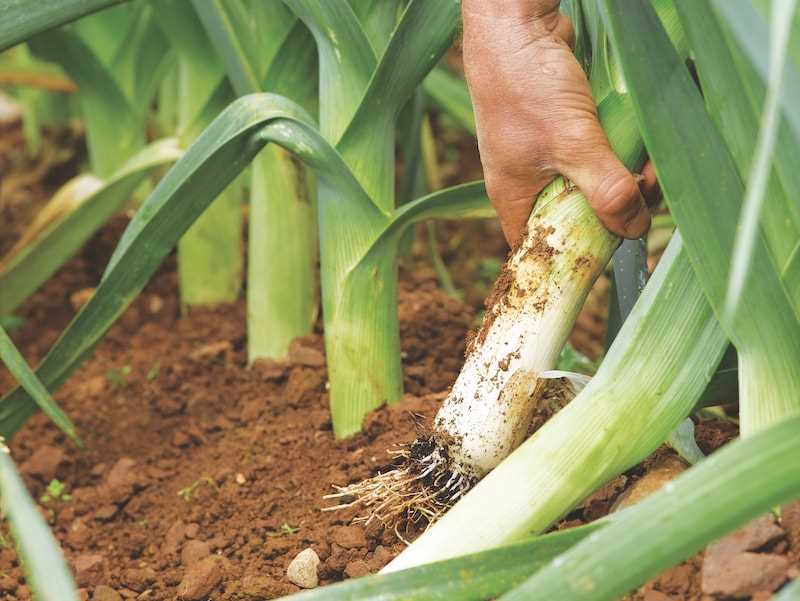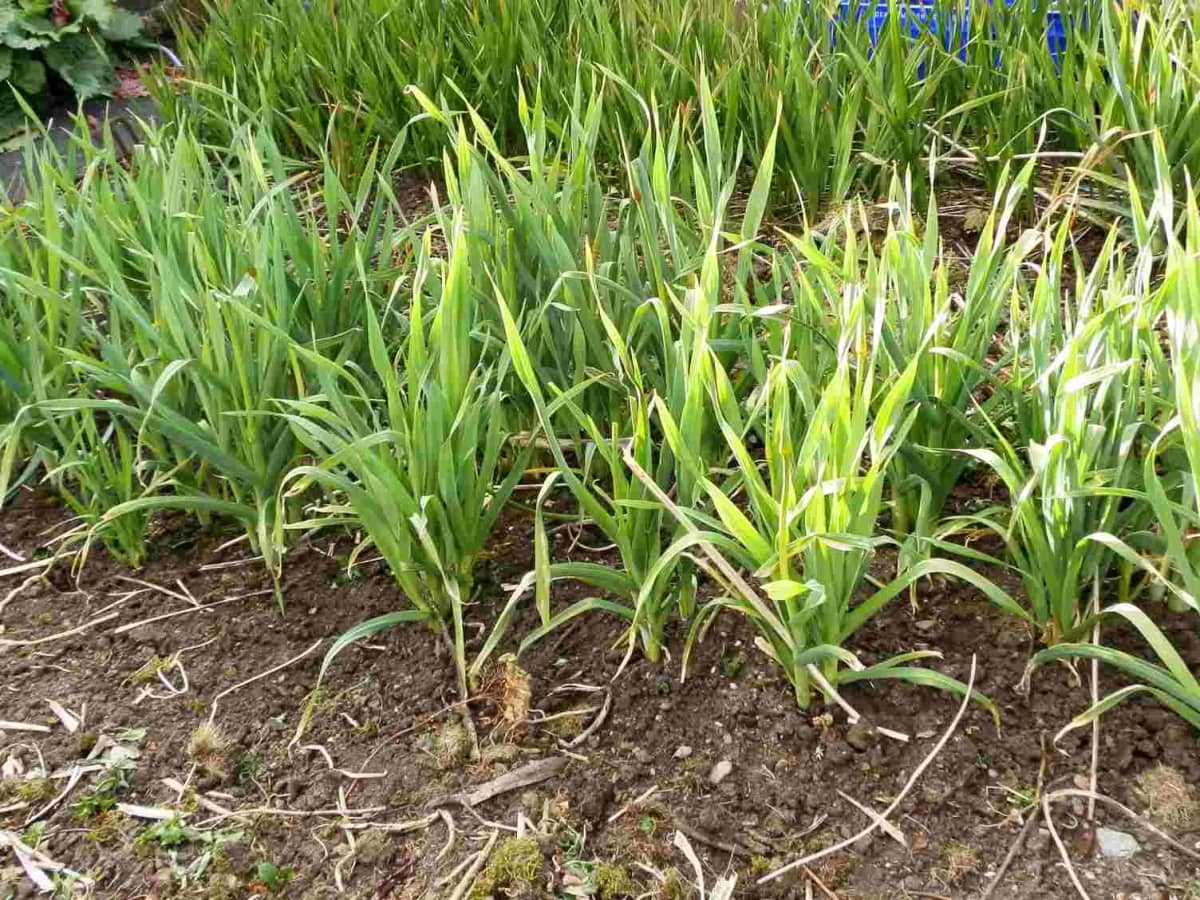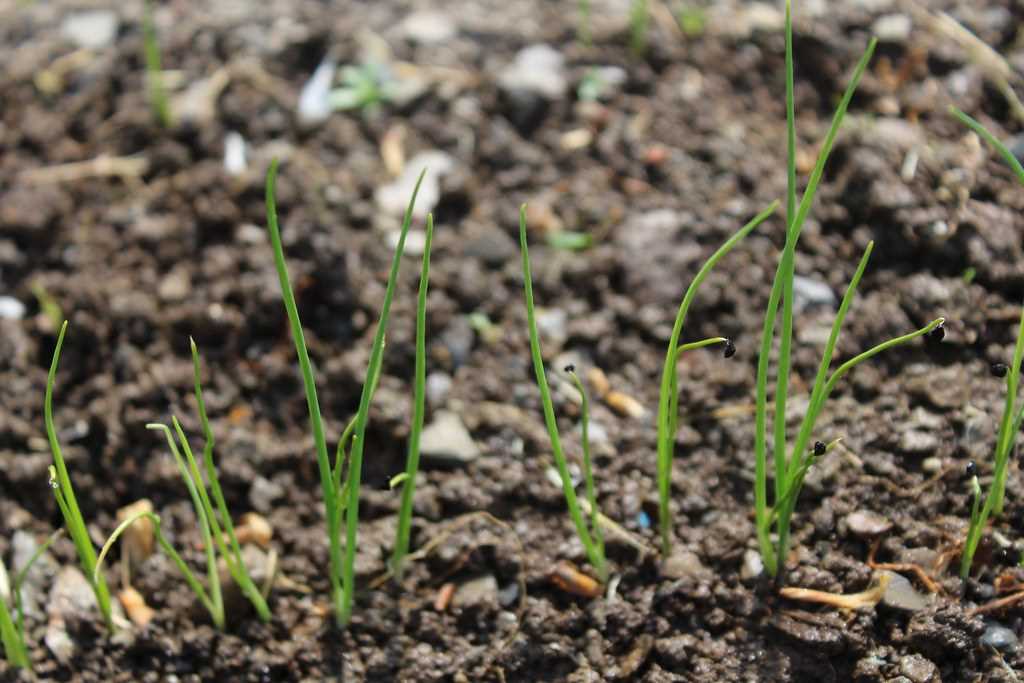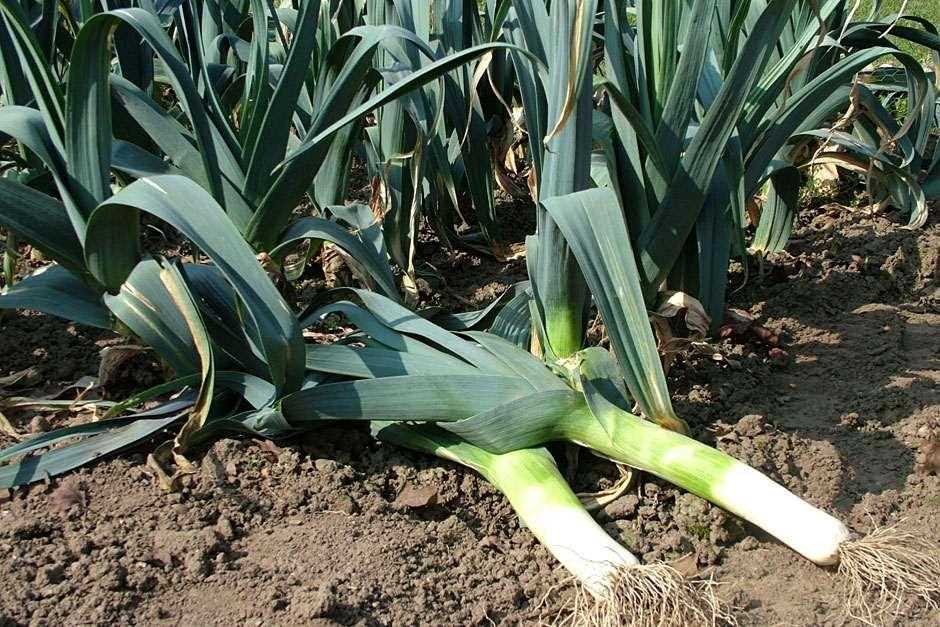- Advantages of Sowing Leeks on Seedlings
- Step-by-Step Guide to Successful Sowing
- 1. Prepare the soil
- 2. Sow the leek seeds
- 3. Water the seeds
- 4. Thin out the seedlings
- 5. Fertilize the plants
- 6. Mulch the plants
- 7. Provide water and weed control
- 8. Harvest the leeks
- Choosing the Right Seeds and Varieties
- Essential Soil Preparation and Conditions for Seedlings
- 1. Soil pH
- 2. Soil Texture
- 3. Weed Control
- 4. Sun Exposure
- 5. Watering
- 6. Fertilization
- 7. Seedling Depth
- 8. Mulching
- 9. Protection from Pests
- Common Mistakes and Failures in Direct Sowing
- Cultural Practices for Optimal Seedling Growth
- 1. Soil Preparation
- 2. Seed Selection and Quality
- 3. Seed Starting
- 4. Transplanting Seedlings
- 5. Watering
- 6. Mulching
- 7. Fertilization
- Successful Transplanting and Care for Transplanted Seedlings
- “Question-Answer”
- What is the best way to sow leeks on seedlings?
- Can leeks be sown directly in the garden?
- What are the reasons why direct sowing leeks may fail?
- How long does it take for leeks to germinate when sown on seedlings?
- Are there any tips for successfully sowing leeks on seedlings?
- “Video” How To Grow Leeks | Easy Method for BIG Harvests
Leeks are a delicious and versatile vegetable that can be used in a variety of dishes. Sowing leeks on seedlings is a common practice that helps ensure a successful and abundant harvest. However, direct sowing can sometimes fail due to a variety of factors. In this article, we will explore the reasons why direct sowing may fail and provide tips for successfully sowing leeks on seedlings.
One of the main reasons why direct sowing leeks may fail is the unpredictable weather conditions. Leeks are sensitive to fluctuations in temperature and moisture, and a sudden change in weather can negatively impact their growth. By sowing leeks on seedlings indoors, you have more control over the growing conditions and can protect the young plants from extreme weather.
Another reason why direct sowing may fail is poor soil quality. Leeks require a well-drained soil that is rich in organic matter. If you plant leek seeds directly into the ground without preparing the soil properly, they may struggle to grow and develop strong roots. By sowing leeks on seedlings, you can ensure that the soil is in optimal condition and provides the necessary nutrients for healthy growth.
In addition, direct sowing leeks can be challenging due to competition from weeds. Weeds can quickly overtake young leek seedlings and hamper their growth. By sowing leeks on seedlings and transplanting them into weed-free soil, you can give the leeks a better chance to establish themselves and grow without competition.
In conclusion, sowing leeks on seedlings is a reliable method to ensure a successful harvest. Direct sowing may fail due to unpredictable weather, poor soil quality, and competition from weeds. By starting leeks indoors on seedlings, you can create optimal growing conditions and give the plants a head start in their journey towards a bountiful harvest.
Advantages of Sowing Leeks on Seedlings
There are several advantages to sowing leeks on seedlings instead of direct sowing them. By starting leeks indoors, you can have more control over the growing conditions and ensure a higher success rate for germination and seedling development. Here are some of the main advantages:
- Early Start: Sowing leeks on seedlings allows you to get a head start on the growing season. By starting the seeds indoors, you can begin the germination process earlier than if you were to sow them directly in the garden. This can result in earlier harvests and a longer growing season.
- Better Control: When you sow leeks on seedlings, you have better control over the growing conditions. You can provide the optimal temperature, light, and moisture levels for germination and seedling development. This can greatly improve the chances of successful germination and ensure healthy and vigorous seedlings.
- Protection from Pests and Diseases: Starting leeks on seedlings indoors can help protect them from pests and diseases that may be present in the garden. By keeping the seedlings in a controlled environment, you can minimize the risk of them being attacked by insects or infected by soil-borne diseases.
- Transplanting Flexibility: Sowing leeks on seedlings gives you more flexibility when it comes to transplanting them into the garden. You can choose the perfect planting time and conditions, ensuring that the seedlings will have the best chance of success when they are moved into their permanent location.
- Space Optimization: Growing leeks on seedlings allows you to optimize the use of space in your garden. By starting them indoors, you can make the most of limited garden space and ensure that every plant has enough room to grow and develop properly.
- Higher Success Rate: Overall, sowing leeks on seedlings generally results in a higher success rate compared to direct sowing. By providing the ideal growing conditions and protecting the seedlings from pests and diseases, you can greatly increase the chances of getting healthy and productive plants.
By taking advantage of these benefits, you can ensure a successful leek harvest and enjoy the many culinary delights that this versatile vegetable has to offer.
Step-by-Step Guide to Successful Sowing
1. Prepare the soil

Choose a sunny spot in your garden with well-drained soil. Leeks prefer a pH level between 6.0 and 7.0. Remove any weeds or stones from the area and loosen the soil using a garden fork or trowel.
2. Sow the leek seeds
Sow the leek seeds directly into the prepared soil. Space the seeds about 2-3 inches apart and plant them at a depth of 1/2 inch. Make sure to press the soil gently around the seeds to ensure good contact.
3. Water the seeds
After sowing the seeds, water the area thoroughly to settle the soil and ensure proper hydration. Keep the soil consistently moist throughout the germination period.
4. Thin out the seedlings
Once the seedlings have emerged and are about 2-3 inches tall, thin them out to give each plant enough space to grow. Leave about 6-8 inches of space between each seedling.
5. Fertilize the plants
About a month after sowing, apply a balanced fertilizer to the leek plants. This will provide them with the necessary nutrients for healthy growth. Follow the fertilizer manufacturer’s instructions for the appropriate amount to use.
6. Mulch the plants
Apply a layer of mulch, such as straw or shredded leaves, around the base of the leek plants. This will help retain moisture, suppress weeds, and provide insulation for the roots.
7. Provide water and weed control
Water the leek plants regularly, especially during dry periods, to keep the soil consistently moist. Be careful not to overwater, as leeks prefer slightly drier conditions. Remove any weeds that may compete with the leek plants for nutrients and space.
8. Harvest the leeks
Leeks can be harvested when they reach maturity, usually after about 90-120 days. Gently loosen the soil around the leek plant and carefully lift it out with a garden fork. Trim the roots and remove any outer leaves before storing or using the leeks in your favorite recipes.
Choosing the Right Seeds and Varieties
Choosing the right seeds and varieties is essential when sowing leeks on seedlings. Different varieties may have different requirements in terms of growing conditions, disease resistance, and taste. Here are some important factors to consider when selecting your leek seeds:
- Growing conditions: Determine whether the leek variety you choose is suited for your specific growing conditions. Some varieties may thrive in colder climates, while others prefer warmer temperatures.
- Days to maturity: Pay attention to the number of days it takes for a leek variety to reach maturity. This information will give you an idea of when you can expect to harvest your leeks.
- Disease resistance: Look for leek varieties that are resistant to common diseases such as leek rust and leek moth. This can help ensure a successful crop.
- Flavor: Consider the taste of the leek variety you are choosing. Some varieties may have a milder flavor, while others may be more robust.
It’s also important to source your leek seeds from reputable suppliers. This ensures that you are getting high-quality seeds that will germinate well and produce healthy seedlings.
By carefully selecting the right seeds and varieties for your growing conditions and preferences, you can increase your chances of successfully sowing leeks on seedlings and enjoying a bountiful harvest.
Essential Soil Preparation and Conditions for Seedlings
Preparing your soil properly is crucial for the successful growth of leek seedlings. Here are some essential steps to take:
1. Soil pH
Leeks prefer slightly acidic soil with a pH level between 6.0 and 7.0. Test the pH level of your soil using a soil testing kit, and if necessary, adjust it by adding lime or sulfur.
2. Soil Texture
Leeks thrive in well-draining soil that is rich in organic matter. Improve the soil texture by adding compost or well-rotted manure, which will provide essential nutrients and improve moisture retention.
3. Weed Control
Remove all weeds and grasses from the planting area before sowing leek seedlings. Weeds compete with the seedlings for nutrients and water, hindering their growth and development.
4. Sun Exposure
Choose a sunny location for your leek seedlings. They require at least six hours of direct sunlight per day to grow and flourish.
5. Watering
Water the soil thoroughly before sowing leek seedlings to ensure proper moisture levels. Leeks require consistent soil moisture, but avoid over-watering as it can lead to diseases.
6. Fertilization
Apply a balanced fertilizer before sowing leek seedlings to provide essential nutrients. Follow the manufacturer’s instructions on the fertilizer packaging for the correct application rate.
7. Seedling Depth
When sowing leek seedlings, plant them at a depth of approximately 1/2 inch. Ensure that the soil is firm around the seedlings to promote proper root growth.
8. Mulching

After sowing the leek seedlings, apply a layer of organic mulch such as straw or wood chips. Mulching helps regulate soil temperature, conserve moisture, and suppress weed growth.
9. Protection from Pests
Protect your leek seedlings from pests such as birds, rabbits, and slugs. Use physical barriers or organic pest control methods to keep them away from your plants.
By following these essential soil preparation and condition steps, you can provide an optimal environment for the successful growth of leek seedlings. Remember to monitor moisture levels and provide regular care to ensure healthy and vigorous plants.
Common Mistakes and Failures in Direct Sowing
Direct sowing leek seeds can be a convenient and effective way to grow this delicious vegetable. However, there are a few common mistakes and failures that can occur when attempting to sow leeks directly into the ground:
- Poor soil preparation: Leeks require well-drained soil with plenty of organic matter. If the soil is not properly prepared, it can lead to poor germination and stunted growth.
- Inadequate seed coverage: Leek seeds are small and should be planted at a depth of about 1/4 inch. If they are not adequately covered with soil, they may dry out or be washed away by rain.
- Overcrowding: Leeks need space to grow and develop their roots. Planting the seeds too closely together can lead to competition for resources and result in thin and weak plants.
- Incorrect planting depth: Planting the leek seeds too deep or too shallow can affect their ability to germinate and establish a strong root system.
- Inconsistent watering: Leek seeds require consistent moisture for germination. If the soil becomes too dry or is excessively watered, it can hinder seed germination and growth.
- Poor seed quality: Using old or low-quality leek seeds can result in poor germination rates and weak plants. It’s important to purchase seeds from reputable sources and store them properly.
By avoiding these common mistakes and failures, you can increase the chances of successfully sowing leeks directly in the ground and enjoy a bountiful harvest of this versatile vegetable.
Cultural Practices for Optimal Seedling Growth
Successful seedling growth is essential for a healthy and productive leek crop. By implementing the following cultural practices, you can promote optimal seedling development:
1. Soil Preparation
Ensure that the soil is well-drained and rich in organic matter. Leeks prefer fertile soil with a pH level between 6.0 and 7.0. Prior to sowing, remove any weeds, rocks, or debris from the planting area. Loosen the soil with a garden fork or tiller to a depth of at least 8 inches (20 cm).
2. Seed Selection and Quality

Choose high-quality leek seeds from a reliable source. Look for seeds that are plump, firm, and free from any signs of damage or disease. Avoid using old or expired seeds, as their germination rate may be low.
3. Seed Starting
Start leek seeds indoors 10-12 weeks before the last frost date in your area. Fill seed trays or pots with a well-draining seed starting mix. Sow the seeds thinly and cover them with a shallow layer of soil. Keep the soil evenly moist but not waterlogged. Place the trays in a warm location with plenty of sunlight or under grow lights to promote healthy seedling growth.
4. Transplanting Seedlings
When the seedlings are around 8-10 inches (20-25 cm) tall and have developed a pencil-thick stem, they are ready for transplanting outdoors. Harden off the seedlings by gradually exposing them to outdoor conditions for a week before planting. Space the leek seedlings about 6 inches (15 cm) apart in rows with a spacing of 12-18 inches (30-45 cm) between rows.
5. Watering
Keep the soil consistently moist but not saturated. Water the leek seedlings deeply once or twice a week, depending on weather conditions. Avoid overhead watering, as it can promote disease development. Instead, water at the base of the plants using a soaker hose or drip irrigation system.
6. Mulching
Apply a layer of organic mulch, such as straw or chopped leaves, around the base of the leek seedlings. Mulching helps conserve soil moisture, suppress weeds, and regulate temperature fluctuations.
7. Fertilization

Leeks are heavy feeders and benefit from regular fertilization. Apply a balanced organic fertilizer or a slow-release granular fertilizer according to the manufacturer’s instructions. Side dress the plants with additional fertilizer every 4-6 weeks throughout the growing season.
By following these cultural practices, you can ensure optimal seedling growth and increase your chances of success when sowing leeks.
Successful Transplanting and Care for Transplanted Seedlings
- Choose the right time to transplant: Transplant leek seedlings when they have reached about 8-10 weeks old. The seedlings should have developed a strong root system and be about 6-8 inches tall.
- Prepare the planting area: Make sure the soil is well-prepared by removing any weeds and adding compost or organic matter to improve its fertility. The soil should be loose and well-drained.
- Transplanting process: Dig holes that are about 6 inches deep and 6 inches apart. Gently remove the seedlings from the tray or pots, being careful not to damage the roots. Place each seedling into its own hole and cover the roots with soil, firming it gently around the base of the seedling.
- Watering: After transplanting, water the seedlings thoroughly to settle the soil and help the roots establish. Keep the soil consistently moist, but not waterlogged, throughout the growing season.
- Mulching: Apply a layer of mulch around the base of the seedlings to help retain moisture, suppress weeds, and regulate soil temperature.
- Protect from extreme weather: If there are high winds or heavy rain forecasted, provide temporary protection to the seedlings using row covers or plant protectors. This will shield them from potential damage.
- Fertilizing: Leeks benefit from regular feeding. Apply a balanced granular fertilizer around the base of the plants every 4-6 weeks during the growing season.
- Thinning: Once the seedlings have been transplanted and are growing well, thin them to a final spacing of 12-18 inches apart. This will allow the leeks to develop their characteristic long white stems.
- Weed control: Keep the planting area free from weeds to reduce competition for nutrients and water. Regularly hand-pull weeds or use a shallow hoe to remove them.
- Pest and disease management: Monitor the seedlings for signs of pests and diseases such as leek moth, onion thrips, and fungal infections. Take appropriate action if any problems are detected.
“Question-Answer”
What is the best way to sow leeks on seedlings?
The best way to sow leeks on seedlings is to start them indoors in trays or pots filled with seed starting mix. Sow the seeds thinly and cover them lightly with more seed starting mix. Keep the soil consistently moist and maintain a temperature of around 60-70°F (15-21°C) for successful germination.
Can leeks be sown directly in the garden?
Yes, leeks can be sown directly in the garden. However, direct sowing may have a higher risk of failure compared to starting them as seedlings indoors. Sowing leeks directly in the garden requires well-prepared soil, good watering and proper care to ensure successful germination and growth.
What are the reasons why direct sowing leeks may fail?
There are several reasons why direct sowing leeks may fail. Firstly, the soil may not be well-prepared, lacking proper drainage or nutrients. Secondly, there may be insufficient watering or inconsistent moisture levels, which is crucial for germination. Thirdly, pests and diseases may attack the seeds or seedlings, leading to failure. Lastly, unfavorable weather conditions such as extreme temperatures or heavy rains can hamper germination and growth.
How long does it take for leeks to germinate when sown on seedlings?
Leeks usually take around 10-14 days to germinate when sown on seedlings indoors, depending on the temperature and growing conditions. It is important to maintain consistent moisture and provide adequate light for successful germination. Once the leek seedlings have germinated, they can be transplanted into the garden after the danger of frost has passed.
Are there any tips for successfully sowing leeks on seedlings?
Yes, there are several tips for successfully sowing leeks on seedlings. Firstly, choose a reputable seed supplier to ensure high-quality seeds. Secondly, sow the leek seeds thinly and cover them lightly with seed starting mix. Thirdly, maintain consistent moisture levels by watering the seedlings regularly. Fourthly, provide adequate light and maintain a temperature of around 60-70°F (15-21°C) for optimal germination. Lastly, transplant the leek seedlings into the garden after they have developed strong roots and the danger of frost has passed.







